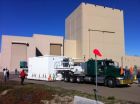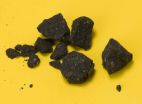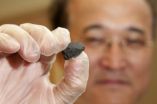(Press-News.org) Growing new blood vessels in the lab is a tough challenge, but a Johns Hopkins engineering team has solved a major stumbling block: how to prod stem cells to become two different types of tissue that are needed to build tiny networks of veins and arteries.
The team's solution is detailed in an article appearing in the January 2013 print edition of the journal Cardiovascular Research. The article also was published recently in the journal's online edition. The work is important because networks of new blood vessels, assembled in the lab for transplanting into patients, could be a boon to people whose circulatory systems have been damaged by heart disease, diabetes and other illnesses.
"That's our long-term goal: to give doctors a new tool to treat patients who have problems in the pipelines that carry blood through their bodies," said Sharon Gerecht, an assistant professor of chemical and biomolecular engineering who led the research team. "Finding out how to steer these stem cells into becoming critical building blocks to make these blood vessel networks is an important step."
In the new research paper, the Gerecht team focused on vascular smooth muscle cells, which are found within the walls of blood vessels. Two types have been identified: synthetic smooth muscle cells, which migrate through the surrounding tissue, continue to divide and help support the newly formed blood vessels; and contractile smooth muscles cells, which remain in place, stabilize the growth of new blood vessels and help them maintain proper blood pressure.
To produce these smooth muscle cells, Gerecht's lab has been experimenting with both National Institutes of Health-approved human embryonic stem cells and induced pluripotent stem cells. The induced pluripotent stem cells are adult cells that have been genetically reprogrammed to act like embryonic stem cells. Stem cells are used in this research because they possess the potential to transform into specific types of cells needed by particular organs within the body.
In an earlier study supervised by Gerecht, her team was able to coax stem cells to become a type of tissue that resembled smooth muscle cells but didn't quite behave properly. In the new experiments, the researchers tried adding various concentrations of growth factor and serum to the previous cells. Growth factor is the "food' that the cells consume; serum is a liquid component that contains blood cells.
"When we added more of the growth factor and serum, the stem cells turned into synthetic smooth muscle cells," Gerecht said. "When we provided a much smaller amount of these materials, they became contractile smooth muscles cells."
This ability to control the type of smooth muscle cells formed in the lab could be critical in developing new blood vessel networks, she said. "When we're building a pipeline to carry blood, you need the contractile cells to provide structure and stability," she added. "But in working with very small blood vessels, the migrating synthetic cells can be more useful."
In cancer, small blood vessels are formed to nourish the growing tumor. The current work could also help researchers understand how blood vessels are stabilized in tumors, which could be useful in the treatment of cancer.
"We still have a lot more research to do before we can build complete new blood vessel networks in the lab," Gerecht said, "but our progress in controlling the fate of these stem cells appears to be a big step in the right direction."
INFORMATION:
In addition to her faculty appointment with Johns Hopkins' Whiting School of Engineering, Gerecht is affiliated with the university's Institute for NanoBioTechnolgy (INBT) and the Johns Hopkins Engineering in Oncology Center.
The lead author of the new Cardiovascular Research paper is Maureen Wanjare, a doctoral student in Gerecht's lab who is supported both by the INBT, through a National Science Foundation Integrative Graduate Education and Research Traineeship, and by the NIH. Coauthors of the study are Gerecht and Frederick Kuo, who participated in the research as an undergraduate majoring in chemical and biomolecular engineering. The human induced pluripotent stem cells used in the study were provided by Linzhao Cheng, a hematology professor in the Johns Hopkins School of Medicine.
This research was supported by an American Heart Association Scientist Development Grant and NIH grant R01HL107938.
Color illustration of blood vessel cells available; contact Phil Sneiderman.
Related links:
Sharon Gerecht's Lab Page: http://www.jhu.edu/chembe/gerecht/
Department of Chemical and Biomolecular Engineering: http://jhu.edu/chembe/
Johns Hopkins Institute for NanoBioTechnology: http://inbt.jhu.edu/
Whiting School of Engineering: http://engineering.jhu.edu/
http://cardiovascres.oxfordjournals.org/content/early/2012/11/13/cvr.cvs315.full
MEDIA CONTACTS:
Phil Sneiderman
Office: 443-287-9960; Cell: 410-299-7462; prs@jhu.edu or
Mary Spiro
Office: 410- 516-4802; Cell: 443-204-7159; mspiro@jhu.edu
Steering stem cells to become 2 different building blocks for new blood vessels
2012-12-21
ELSE PRESS RELEASES FROM THIS DATE:
2 novel treatments for retinitis pigmentosa move closer to clinical trials
2012-12-21
New York, NY (December 20, 2012) — Two recent experimental treatments — one involving skin-derived induced pluripotent stem (iPS) cell grafts, the other gene therapy — have been shown to produce long-term improvement in visual function in mouse models of retinitis pigmentosa (RP), according to the Columbia University Medical Center (CUMC) scientists who led the studies. At present, there is no cure for RP, the most common form of inherited blindness.
"While these therapies still need to be refined, the results are highly encouraging," said Stephen H. Tsang, MD, PhD, associate ...
NASA sees Cyclone Evan blown apart by wind shear
2012-12-21
Cyclone Evan is no more than a remnant low pressure area in the South Pacific Ocean now. NOAA's GOES-15 satellite captured an image of the remnants from its fixed orbit in space on Dec. 20 that showed strong wind shear had basically blown the storm apart.
The last official bulletin by the Joint Typhoon Warning Center was issued on Dec. 19 at 2100 UTC (4 p.m. EST/U.S. or 12:56 a.m. Fiji local time on Dec. 20). At that time, Evan's maximum sustained winds were still near 35 knots (40 mph/64.8 kph) and it had transitioned into an extra-tropical storm. It was located 400 ...
Eighth Landsat satellite arrives at launch site
2012-12-21
An oversized semi-trailer truck carrying NASA's Landsat Data Continuity Mission (LDCM) has arrived at its launch site at Vandenberg Air Force Base in California in preparation for launch. This NASA and U.S. Geological Survey mission will continue a 40-year record of measuring change on the planet from space.
LDCM is the eighth satellite in the Landsat series, which began in 1972. It will extend and expand global land observations that are critical in many sectors, including energy and water management, forest monitoring, human and environmental health, urban planning, ...
Protein kinase Akt identified as arbiter of cancer stem cell fate
2012-12-21
PHILADELPHIA — The protein kinase Akt is a key regulator of cell growth, proliferation, metabolism, survival, and death. New work on Akt's role in cancer stem cell biology from the lab of senior author Honglin Zhou, MD, PhD and Weihua Li, co-first author, both from the Center for Resuscitation Sciences, Department of Emergency Medicine, Perelman School of Medicine, University of Pennsylvania, and Xiaowei Xu, Department of Pathology and Laboratory Medicine, appears in Molecular Cell. The findings were also highlighted in Nature and Science reviews.
This new research shows ...
Discovery of Africa moth species important for agriculture, controlling invasive plants
2012-12-21
GAINESVILLE, Fla. — In the rain forests of the Congo, where mammals and birds are hunted to near-extinction, an impenetrable sound of buzzing insects blankets the atmosphere.
Because it is a fairly inaccessible region with political unrest, much of the Congo's insect biodiversity remains largely undiscovered. In a new monographic book published this week in Zootaxa, researchers at the University of Florida and the Royal Museum of Central Africa in Belgium provide insect biodiversity information for this area in Central Africa that increasingly undergoes habitat destruction. ...
U of T Researchers uncover major source of evolutionary differences among species
2012-12-21
University of Toronto Faculty of Medicine researchers have uncovered a genetic basis for fundamental differences between humans and other vertebrates that could also help explain why humans are susceptible to diseases not found in other species.
Scientists have wondered why vertebrate species, which look and behave very differently from one another, nevertheless share very similar repertoires of genes. For example, despite obvious physical differences, humans and chimpanzees share a nearly identical set of genes.
The team sequenced and compared the composition of hundreds ...
New meteorite suggests that asteroid surfaces more complex than previously thought
2012-12-21
Meteorites that had fallen from an asteroid impact that lit up the skies over California and Nevada in April are showing scientists just how complex an asteroid surface can be. A new study published in Science this week by an international team of researchers describes the speedy recovery of the meteorites and reports that this space rock is an unusual example from a rare group known as carbonaceous chondrites, which contain some of the oldest material in the solar system. The study of these meteorites and others like them could hold answers to unsolved mysteries about ...
Gift misgivings? Trust your gut
2012-12-21
CHESTNUT HILL, MA (Dec. 20, 2012) – The clock is ticking and you still haven't decided what to get that special someone in your life for the holidays. When it comes to those last-minute gift-buying decisions for family and close friends, intuition may be the best way to think your way through to that perfect gift.
When faced with tough decisions, some people like to "trust their gut" and go with their intuition. Others prefer to take an analytical approach.
Boston College Professor Michael G. Pratt, an expert in organizational psychology, says new research shows intuition ...
Meteorite triggered scientific gold rush
2012-12-21
A meteorite that exploded as a fireball over California's Sierra foothills this past spring was among the fastest, rarest meteorites known to have hit the Earth, and it traveled a highly eccentric orbital route to get here.
An international team of scientists presents these and other findings in a study published Friday, Dec. 21, in the journal Science. The 70-member team included nine researchers from UC Davis, along with scientists from the SETI Institute, NASA and other institutions.
The researchers found that the meteorite that fell over Northern California on April ...
Engineers seek ways to convert methane into useful chemicals
2012-12-21
Little more than a decade ago, the United States imported much of its natural gas. Today, the nation is tapping into its own natural gas reserves and producing enough to support most of its current needs for heating and power generation, and is beginning to export natural gas to other countries.
The trend is expected to continue, as new methods are developed to extract natural gas from vast unrecovered reserves embedded in shale. Natural gas can be used to generate electricity, and it burns cleaner than coal.
"With petroleum reserves in decline, natural gas production ...




